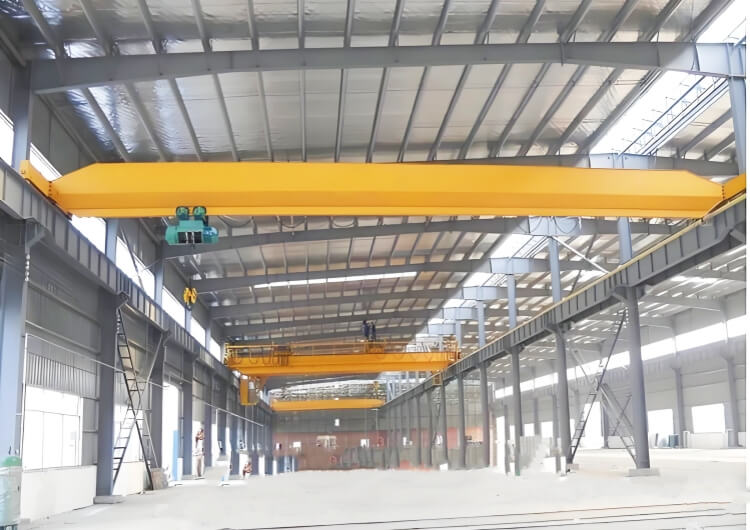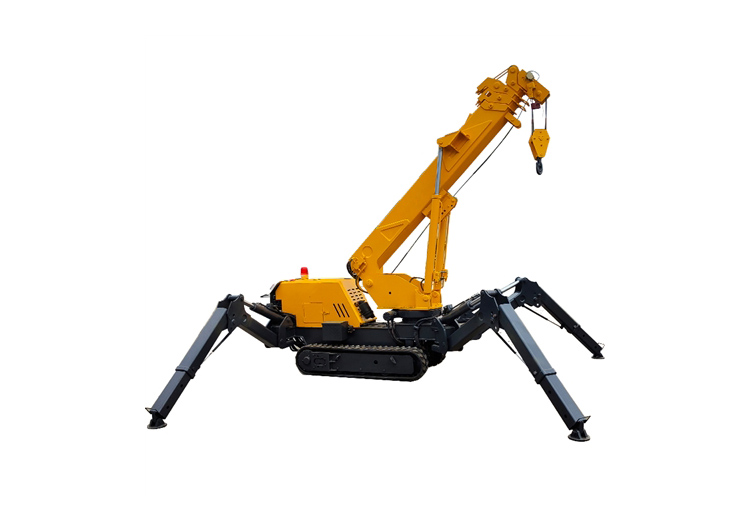Types and Selection of Indoor Cranes
Indoor cranes are essential for optimizing material handling in factories, warehouses, and production facilities. This guide explores common types of indoor cranes, their applications, and key factors to consider when selecting the right crane for your operations.
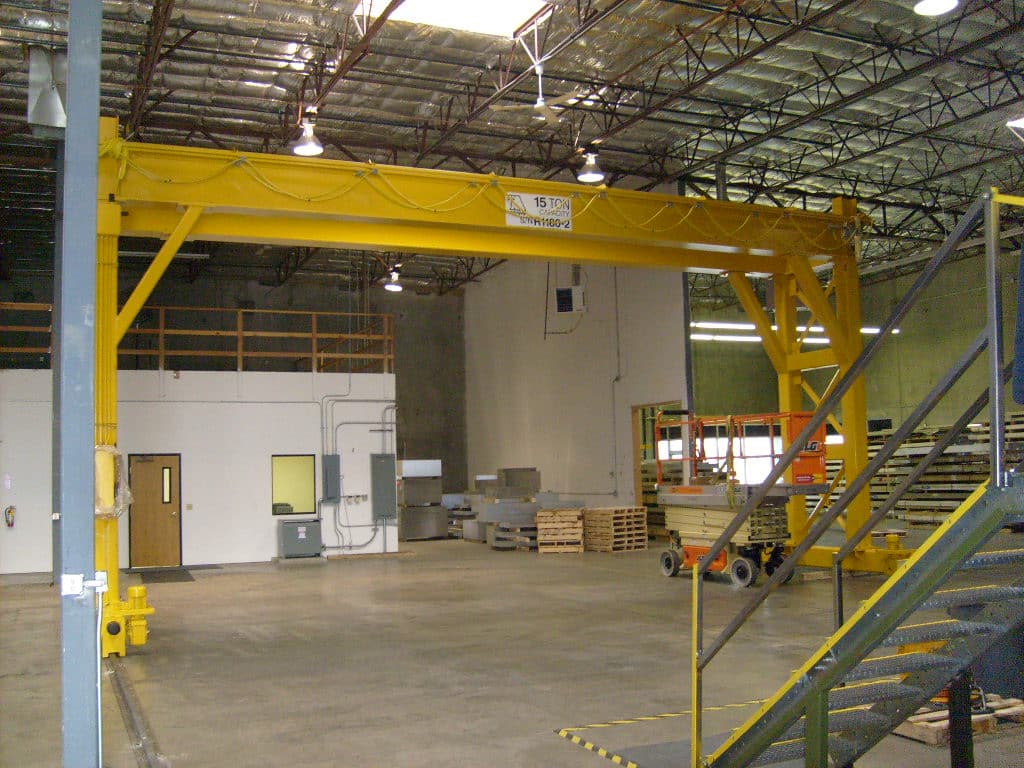
Types of Indoor Cranes
1 Overhead Bridge Cranes
- Structure: Consists of parallel runways with a traveling bridge and hoist.
- Single-Girder: Light-duty (1–20 tons), cost-effective for small spans (5–30 meters).
- Double-Girder: Heavy-duty (5–500+ tons), ideal for large spans (30–50+ meters).
- Applications:
- Assembly lines, steel mills, automotive manufacturing.
- Lifting machinery, raw materials, or finished products.
- Advantages:
- Full floor coverage with minimal obstructions.
- Customizable with automated controls.
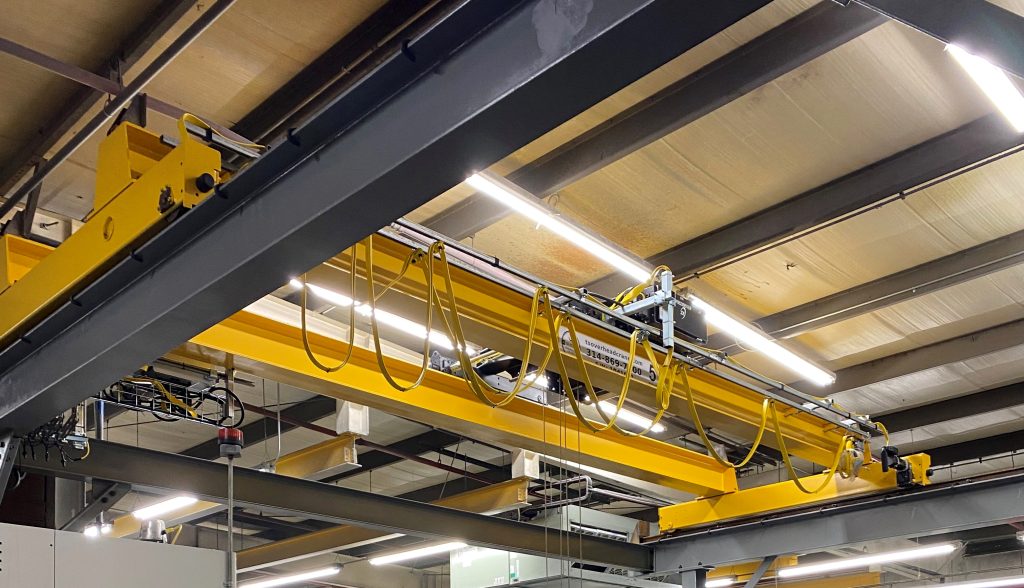

2 Jib Cranes
- Structure:
- Wall-Mounted: Rotates 180°, ideal for tight spaces.
- Freestanding: 360° rotation, supports up to 10 tons.
- Applications:
- Loading docks, workshops, and machining areas.
- Repetitive lifting in confined zones.
- Advantages:
- Low installation cost and flexible positioning.
- Ideal for localized material transfer.
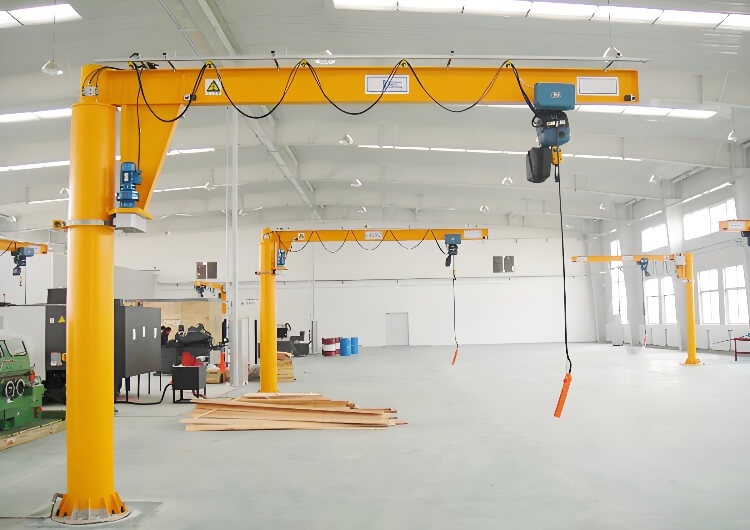

3 Monorail Cranes
- Structure: Fixed track system with a single hoist trolley.
- Applications:
- Conveying materials along a fixed path (e.g., painting lines, packaging).
- Handling lightweight items (0.5–10 tons).
- Advantages:
- Seamless integration with production workflows.
- Minimal floor space requirement.

4 Gantry Cranes
- Structure: Portable or fixed frames with legs supporting the bridge.
- Semi-Gantry: One leg on a runway, the other on the floor.
- Full Gantry: Both legs move on floor-mounted tracks.
- Applications:
- Warehouses, shipping containers, and heavy equipment maintenance.
- Advantages:
- No building structure dependency.
- Easy relocation for multi-bay operations.
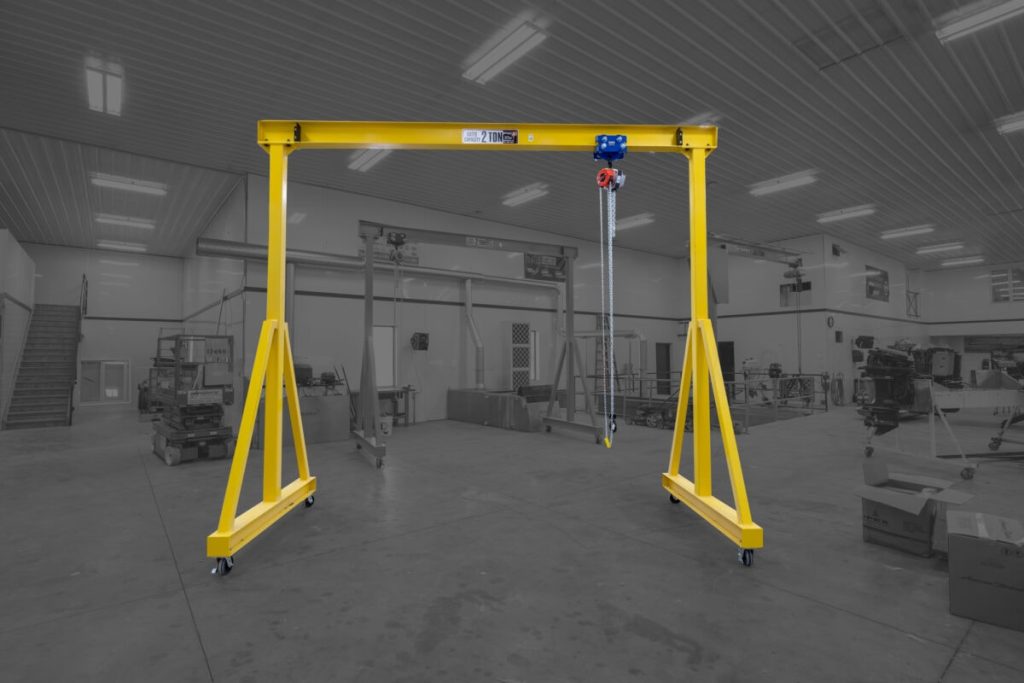
5 Stacker Cranes
- Structure: Automated vertical mast with forks or platforms.
- Applications:
- High-density storage systems (AS/RS).
- Palletized goods in logistics centers.
- Advantages:
- Maximizes vertical storage space.
- Fully programmable with warehouse management systems (WMS).

Key Factors for Selecting Indoor Cranes
1. Load Capacity Optimization
- Safety Margin: Select cranes with a 20% safety margin above maximum operational loads; dual braking systems are mandatory for loads exceeding 3 tons
- Cyclic Load Analysis: Evaluate fatigue life under periodic peak loads
2. Environmental Adaptability
- Corrosion Resistance: Prioritize galvanized models for corrosive environments
- Dust Protection: Use IP54-rated enclosed structures in high-particulate areas
- Climate Control: Customize thermal management for extreme temperature/humidity variations
3. Safety Mechanisms
- Standard Protections: Include overload protection, dual limit switches, and emergency brakes (<0.5s response time)
- Advanced Motion Control: Implement load-turning functions for safer horizontal heavy-load handling
4. Power & Structural Design
- Precision Drives: High-torque motors with ±2mm positioning accuracy and variable-frequency speed control
- Durability Validation: Alloy steel frameworks and reinforced bearings verified through 2,000-hour endurance testing
5. Span Configuration
- Standard Range: 6-30m spans for typical workshop layouts
- Custom Solutions: Redesign drum winding systems and wire rope materials for ultra-high spans
6. Operational Economy
- Energy Efficiency: Prioritize IE4+ motors for long-term energy savings
- Maintenance Costs: Compare replacement cycles for seals, brakes, and other wear parts
7. Specialized Applications
- Cleanroom Compliance: Integrate dust covers and anti-static systems for labs/medical facilities
- Human-Machine Interaction: Deploy smart collision avoidance with real-time personnel tracking
Emerging Trends in Port Crane Technology
1 Load Capacity
- Match the crane’s rated capacity to your maximum lifting weight, including shock loads.
- Example: A 10-ton crane is unsuitable for 12-ton molds in foundries.
2 Span and Height
- Span: Distance between runways; ensure coverage of the entire work area.
- Lifting Height: Account for hook approach and vertical clearance (e.g., mezzanines).
3 Duty Cycle (Usage Frequency)
- CMAA Classifications:
- Class A (Standby): Rare use (maintenance).
- Class D (Severe Service): High-intensity, 24/7 operations (e.g., steel mills).
4 Space Constraints
- Low Headroom: Opt for compact hoists or underslung cranes.
- Obstructions: Jib cranes work around columns; monorails bypass floor obstacles.
5 Power and Control
- Manual vs. Electric:
- Chain hoists for light, occasional lifts.
- Radio remote controls for precision in hazardous zones.
- Automation: IoT-enabled cranes for real-time tracking and predictive maintenance.
6 Safety Features
- Overload limiters, emergency stops, and anti-collision sensors.
- Compliance with OSHA or ISO 4301 standards.
7 Budget
- Balance upfront costs (equipment, installation) with long-term savings (energy efficiency, maintenance).
Comparison Table: Indoor Crane Types
| Type | Load Capacity | Span | Best For |
|---|---|---|---|
| Overhead Bridge | 1–500+ tons | 5–50+ meters | Heavy loads, wide areas |
| Jib Crane | 0.5–10 tons | 2–10 meters | Tight spaces, localized lifts |
| Monorail | 0.5–10 tons | Fixed path | Linear production lines |
| Gantry | 5–100 tons | 5–30 meters | Workshops, no runway support |
| Stacker Crane | 0.5–5 tons | N/A | Automated storage systems |
Conclusion
Selecting the right indoor crane requires analyzing load requirements, spatial limitations, and operational goals. Bridge cranes dominate heavy industries, while jib cranes excel in flexibility. For automated facilities, stacker cranes integrated with SHENLI are a game-changer. Always prioritize safety certifications and lifecycle costs to ensure a future-proof investment.
All News
Recent Posts
2025/1/25
2025/2/7
2024/8/1
Contact Us Now
Have questions about our cranes or need help?
Reach out to our friendly team for expert support and guidance.
We are here to help you power your journey towards a greener future !
Tel: +8615738677559
E-mail: info@slkjcrane.com
Whatsapp: +8615738677559
Address: Crane Industry Park, Xinxiang City Henan Provice

